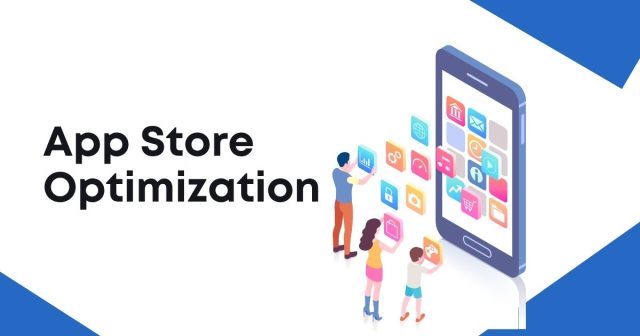Every day, thousands of new apps launch in the Apple App Store and Google Play Store, creating a fiercely competitive landscape where visibility can make or break your mobile app marketing strategy. With over 2.2 million apps available on the App Store and 3.4 million on Google Play, standing out requires more than just building a great product.
App Store Optimization (ASO) serves as the cornerstone of successful mobile app marketing, helping developers and marketers increase their app’s visibility, drive organic downloads, and reduce user acquisition costs. Unlike traditional SEO for websites, ASO focuses specifically on optimizing your app’s presence within app store search results and category rankings.
This comprehensive guide will walk you through everything you need to know about ASO, from fundamental concepts to advanced strategies that can transform your app’s performance in the competitive mobile marketplace.
What is App Store Optimization?

App Store Optimization is the process of improving your mobile app’s visibility and conversion rates within app store search results. Similar to how search engine optimization helps websites rank higher on Google, ASO helps your app appear more prominently when users search for relevant keywords in app stores.
The primary goals of ASO include increasing organic app downloads, improving search rankings, enhancing user acquisition quality, and reducing overall marketing costs. Unlike paid advertising, ASO focuses on organic growth strategies that provide long-term benefits for your mobile app marketing efforts.
ASO encompasses both on-metadata optimization (elements you control directly) and off-metadata factors (elements influenced by user behavior and external factors). Understanding this distinction helps create a more comprehensive optimization strategy.
Why App Store Optimization Matters for Mobile App Marketing
Mobile app marketing faces unique challenges that make ASO essential for success. Organic discovery through app store search accounts for approximately 65% of all app downloads, making it the largest source of app acquisition for most developers.
Cost efficiency represents another major advantage of ASO. While paid user acquisition costs continue rising across all industries, optimized organic visibility provides sustainable growth without ongoing advertising expenses. Apps with strong ASO foundations often achieve better return on investment from their paid marketing campaigns as well.
User quality from organic app store discovery typically exceeds that of other acquisition channels. Users who find your app through relevant searches demonstrate higher intent and engagement levels, leading to better retention rates and lifetime value.
Key ASO Ranking Factors

App stores use complex algorithms to determine search rankings and category positions. Understanding these ranking factors helps prioritize your optimization efforts effectively.
Keyword Relevance and Density
Keyword optimization forms the foundation of successful ASO. App stores analyze your app’s title, subtitle, description, and keyword field to understand its relevance for specific search queries. Strategic keyword placement throughout these elements signals to the algorithm what searches your app should appear for.
Research shows that apps including target keywords in their titles achieve significantly higher rankings for those terms. However, keyword stuffing can negatively impact both algorithm performance and user experience.
Download Velocity and Volume
App stores reward apps that demonstrate consistent download growth over time. This metric, known as download velocity, carries more weight than total lifetime downloads when determining current rankings.
Recent download trends matter more than historical performance, meaning newly launched apps can compete effectively with established competitors by generating strong initial momentum.
User Engagement Metrics
App stores closely monitor user behavior after download to assess app quality. Key engagement metrics include session length, retention rates, and feature usage patterns. Apps that keep users engaged for longer periods typically achieve higher search rankings.
Reviews and ratings directly impact both algorithm rankings and user conversion decisions. Maintaining high ratings while encouraging regular review submissions creates a positive feedback loop that improves overall ASO performance.
Conversion Rate Optimization
Your app store listing’s conversion rate significantly influences rankings. App stores track how often users download your app after viewing its listing page, rewarding apps that demonstrate strong user appeal.
Visual elements like screenshots, preview videos, and icon design play crucial roles in conversion optimization. A/B testing these creative assets can dramatically improve both conversion rates and search performance.
Essential ASO Elements to Optimize
App Title and Subtitle Optimization
Your app title carries the most weight for keyword rankings while serving as the first impression for potential users. Effective titles balance keyword optimization with brand recognition and user appeal.
The subtitle (iOS) or short description (Android) provides additional keyword optimization opportunities while explaining your app’s core value proposition. These elements should work together to create a compelling first impression that encourages further exploration.
Description and Feature Highlights
App descriptions serve different functions across platforms. iOS uses descriptions primarily for conversion rather than keyword ranking, while Google Play considers description content for search relevance.
Focus on clearly communicating your app’s benefits, key features, and unique selling points. Use bullet points, formatting, and compelling language to make your description scannable and persuasive.
Visual Asset Optimization
Screenshots represent your most powerful conversion tool, offering users a preview of your app’s interface and functionality. Create screenshots that tell a story about your user experience while highlighting key features and benefits.
App icons must stand out in crowded search results while accurately representing your brand and functionality. Consider how your icon appears at different sizes and against various backgrounds within app store interfaces.
Preview videos can significantly boost conversion rates when executed well. Create short, engaging videos that demonstrate your app’s core value within the first few seconds to capture user attention effectively.
Review and Rating Management
Actively managing your app’s reviews and ratings impacts both search rankings and user trust. Implement in-app review prompts strategically to encourage satisfied users to leave positive feedback.
Respond professionally to negative reviews when possible, demonstrating a commitment to user satisfaction. Many users appreciate developers who address concerns and provide helpful solutions.
Advanced ASO Strategies
Localization for Global Markets
Expanding into international markets requires comprehensive localization beyond simple translation. Research local keyword preferences, cultural preferences, and competitive landscapes for each target market.
Localized screenshots, descriptions, and even app icons can significantly improve performance in specific regions. Consider local holidays, cultural references, and design preferences when creating market-specific assets.
Competitive Analysis and Monitoring
Regular competitive analysis reveals optimization opportunities and market trends. Monitor competitor keyword strategies, visual assets, and user feedback to identify gaps in your own approach.
Track competitor ranking movements and update strategies to understand which tactics drive results in your category. This intelligence helps prioritize optimization efforts and identify emerging opportunities.
Seasonal and Trending Keyword Optimization
App store search trends fluctuate based on seasons, holidays, and cultural events. Incorporating trending keywords into your optimization strategy can capture increased search volume during relevant periods.
Monitor industry trends, viral topics, and seasonal patterns that might relate to your app’s functionality. Temporary keyword adjustments can drive significant short-term gains when executed strategically.
Measuring ASO Success
Key Performance Indicators
Track organic download growth, keyword ranking improvements, and conversion rate changes to measure ASO effectiveness. These metrics provide clear indicators of optimization success and areas requiring improvement.
Monitor user quality metrics like retention rates and in-app engagement to ensure that increased visibility translates into valuable user acquisition. High download numbers mean little if users immediately uninstall your app.
Analytics Tools and Platforms
Leverage app store analytics tools to track performance across multiple dimensions. Platforms like App Annie, Sensor Tower, and native app store analytics provide insights into keyword performance, competitive positioning, and user behavior.
Set up regular reporting schedules to monitor progress and identify optimization opportunities. Consistent measurement enables data-driven decision making and strategy refinement.
Taking Your Mobile App Marketing to the Next Level
App Store Optimization represents a fundamental component of successful mobile app marketing that requires ongoing attention and refinement. The strategies outlined in this guide provide a foundation for improving your app’s visibility, downloads, and user quality through organic app store discovery.
Success in ASO comes from consistent testing, measurement, and optimization rather than one-time implementation. Start by focusing on the fundamental elements like keyword optimization and visual assets, before advancing to more sophisticated strategies like localization and competitive intelligence.
Remember that ASO works best when integrated with broader mobile app marketing efforts. Combine organic optimization with strategic paid acquisition, social media marketing, and retention strategies to maximize overall performance and return on investment.
Begin implementing these ASO strategies today by conducting a comprehensive audit of your current app store presence, identifying the highest-impact optimization opportunities, and creating a systematic approach to testing and improvement.




